The artist J.C. Leyendecker charmed Post readers with his cover paintings of innocent children at Christmas. Every year he carefully selected a model who exemplified the sweetness of childhood.

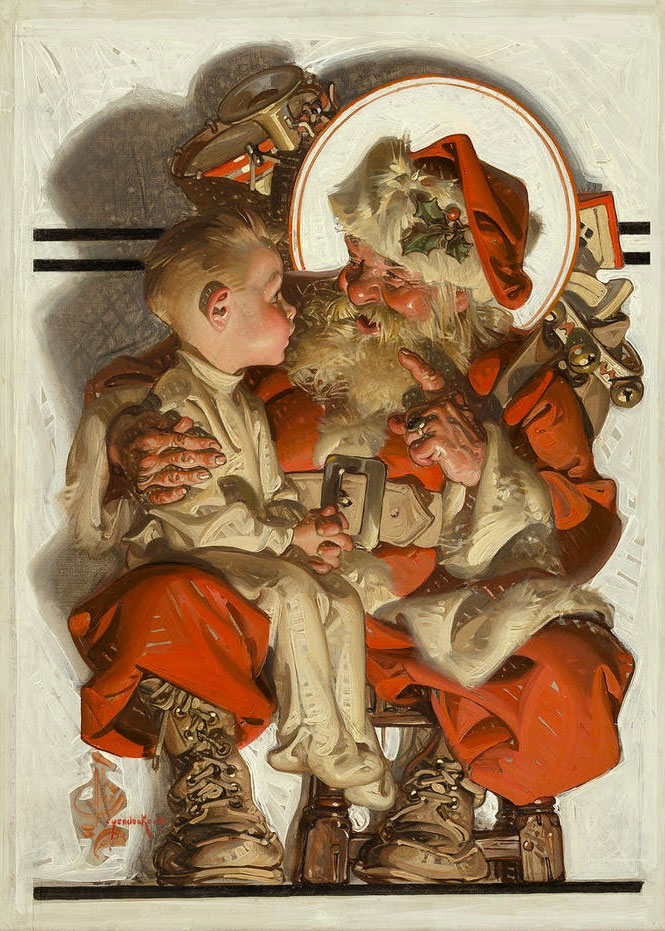
In some years it was difficult for children to be innocent. For example, in times of war or national stress, Leyendecker’s annual Christmas covers reflected the toll on children.

This brings us to the sad tale of Richard Wyndham Hoffmann, the two-year-old boy on Santa’s lap for Leyendecker’s 1923 cover.
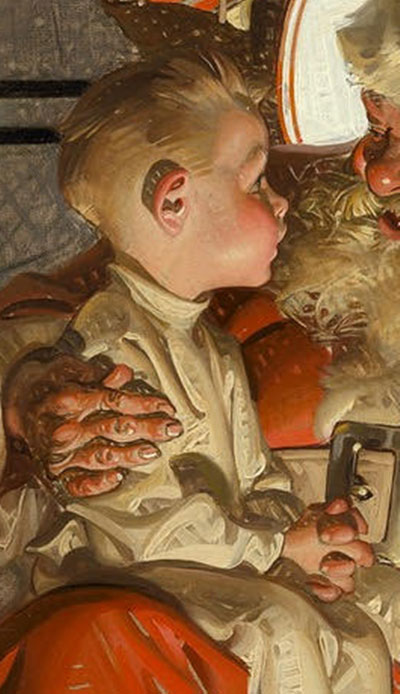
Leyendecker asked Richard’s parents to allow him to paint the boy sitting on Santa’s lap for the Christmas cover. The cover turned out beautifully, but all was not going so well in the boy’s home.
His parents quarreled bitterly. Richard’s father, Richard H. Hoffmann Sr., was a Park Avenue psychiatrist who treated alcoholic celebrities such as the gangster Frank Costello, author F. Scott Fitzgerald, and composer Lorenz Hart. The police consulted him on notorious crimes of the day, such as the Lindbergh baby kidnapping. Occasionally, he freelanced writing potboiler books.
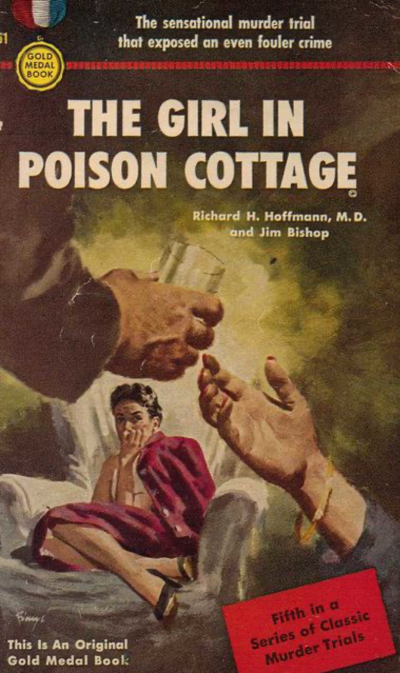
Richard’s mother, Janet Beecher, was a Broadway actress focused on her career. She occasionally appeared in movies such as The Mark of Zorro or The Lady Eve. Her spiritual beliefs were highly unorthodox. She consulted spirits from the afterlife for advice on how to conduct the family’s daily affairs, including which acting jobs she should take and how the family should invest their money. The spirits spoke to Janet through messages they would send to her mother, Mrs. Oral J. Wyndham. Mrs. Wyndham would write out the messages the spirits dictated to her, a practice called “automatic writing.” Not surprisingly, those messages were often critical of her son-in-law, disparaging his character and his investment strategies. In 1924, a few months after their son appeared on the cover of the Post, the “spirits” advised Dr. Hoffmann to finance a new play for his wife. The play turned out to be a critical disaster, as well as a financial disaster for the family.
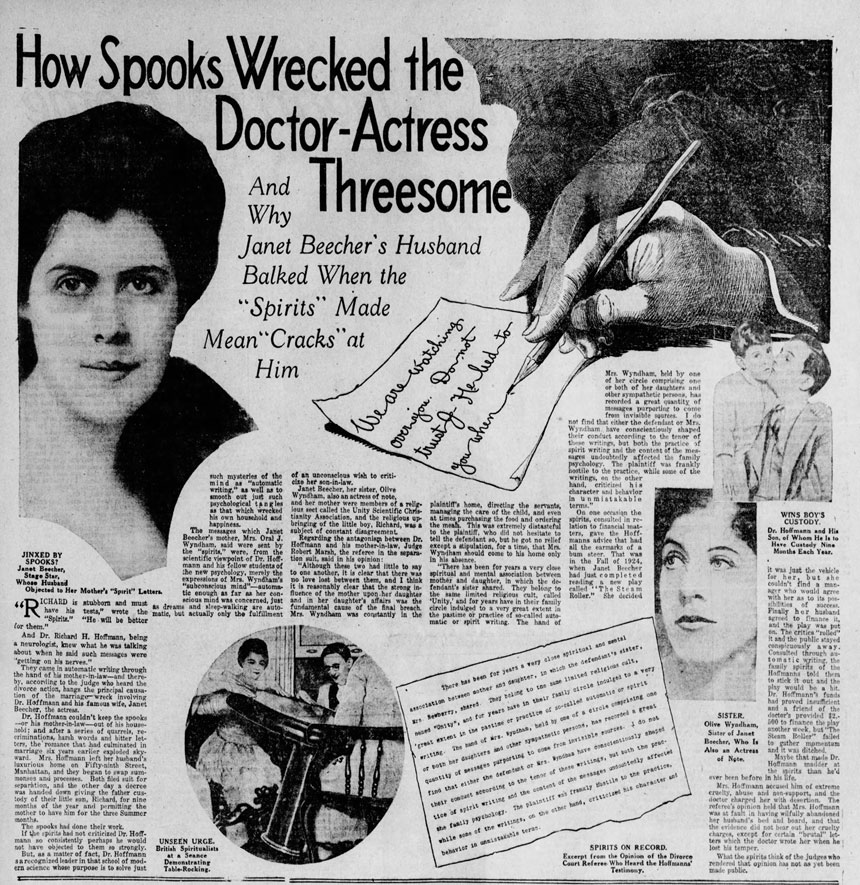
It did not help, the court ruled, that Beecher belonged to a “religious cult” named “Unity,” which didn’t believe in her husband’s medical science and interfered with young Richard’s health care.
Shortly after Richard appeared as the innocent boy sitting on Santa’s lap, his parents began a bitter ten-year, highly publicized divorce. Richard now sat on the lap of either his father or his mother, depending on who won the latest round in the lawsuit.
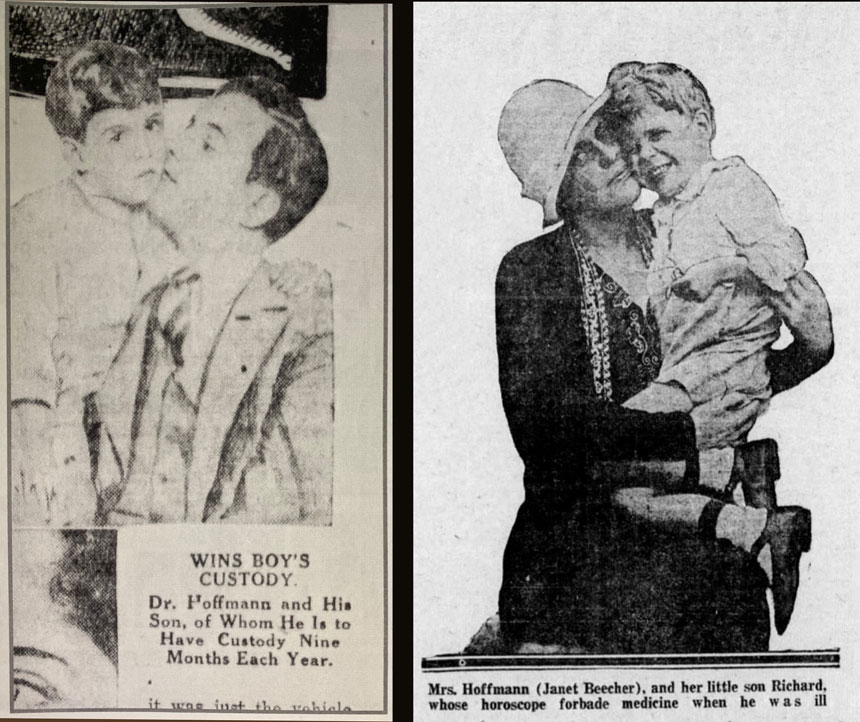
For years, Richard served as the rope in a tug-of-war between his squabbling parents. The judge was forced to ask Richard to choose one parent over the other.
After the dust finally settled from the divorce, Leyendecker reached out again to Richard — now 16 — and asked to paint him for another cover of the Post. This was very rare. Leyendecker knew Richard had been through a lot. Illustration scholar and Leyendecker expert Bud Moon recounts how Leyendecker gave Richard the original cover painting from 1923, which Leyendecker had kept all those years, and inscribed it to Richard “from his friend J.C. Leyendecker.”
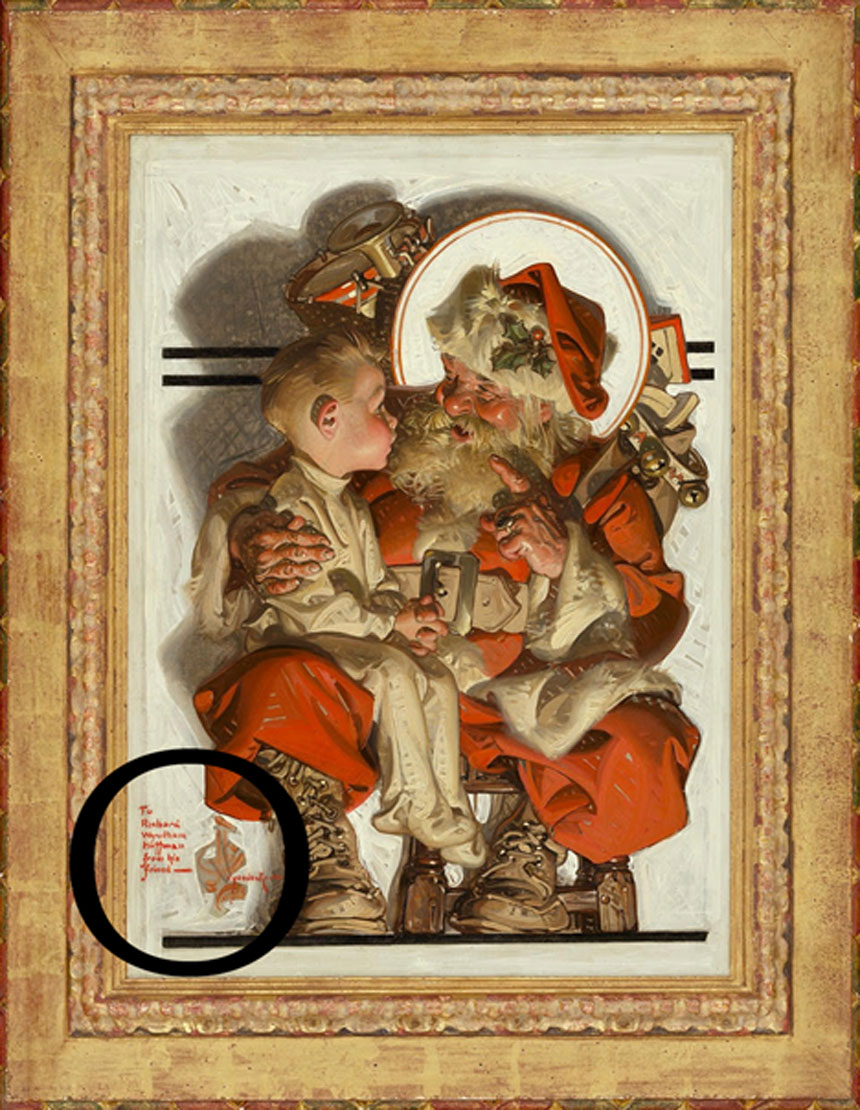
For the new Post cover, Leyendecker painted Richard putting on his big boy pants for the first time.
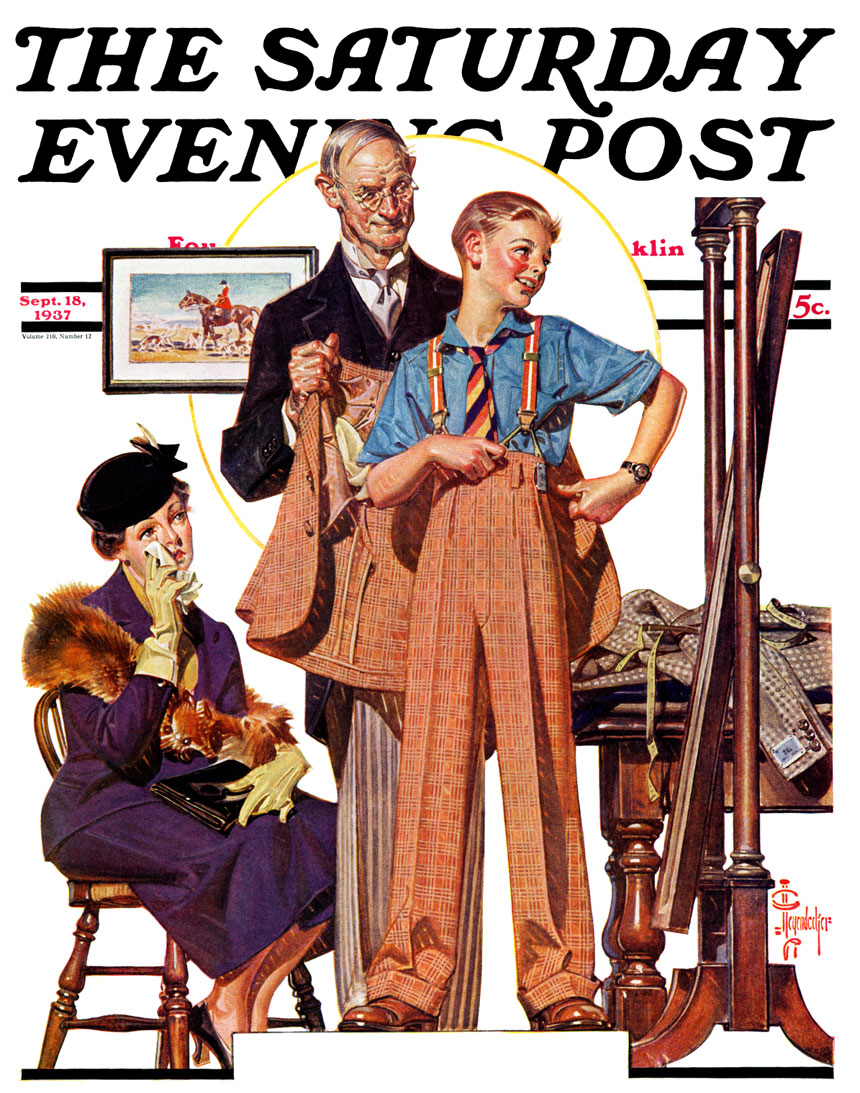
It’s true, Richard had come through a lot and was indeed a big boy now. In a few short years, at age 20, Richard enlisted in the Army Air Corps to fight in World War II. He became a highly decorated bombardier with 26 combat missions. He flew as the lead bombardier in a squadron of B-17 flying fortresses. One time, he returned to base in a plane so riddled with bullets the plane had to be rebuilt before it could be flown again.
Richard grew up in other ways, too. He married before he left for the war, but the marriage didn’t last long. He married a second time, this time to a girl named “Cookie” Warren, whose father Harry Warren wrote such classic songs as “Jeepers Creepers” and “Chattanooga Choo-Choo.”
But the little boy on Santa’s lap wasn’t fated for a long, happy life. He died young, at age 37, in 1959.
Become a Saturday Evening Post member and enjoy unlimited access. Subscribe now
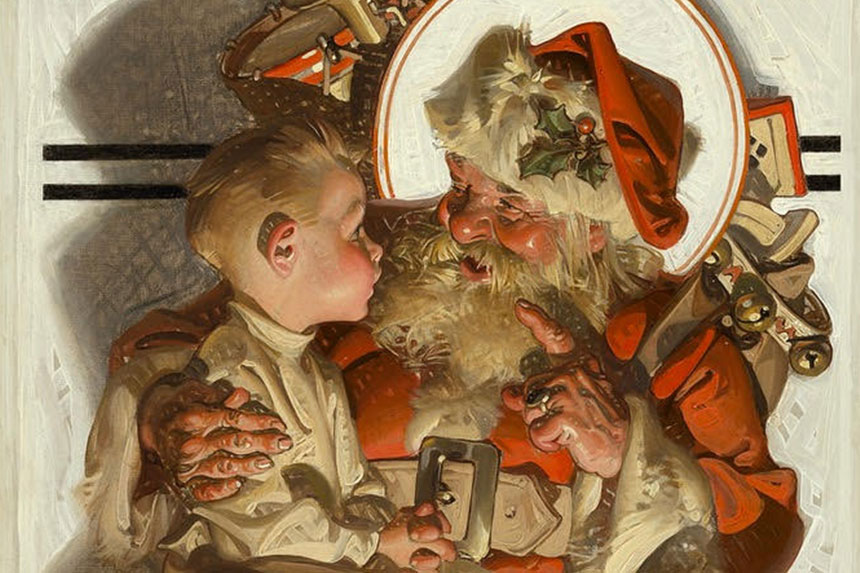
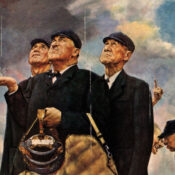


Comments
I am curious what took Richard’s life at the young age of 37, if that is known. Possibly his mother’s involvement in a cult which questioned medicine negatively affected his general health, making him more susceptible to disease. This story certainly underscores the damage marital strife and contentious divorce can have on the children involved. Thank you for providing “the rest of the story” of this beautiful SEP cover.
Thanks for the real life story of this sweet child J.C. Leyendecker specifically chose for the beloved Post cover. I feel so bad for all he had to endure. Really terrible mentally and emotionally. It also shows what a kind man Leyendecker was, aware of Richard’s turmoil, and having him on another great cover in 1937.
In addition, giving Richard the original 1923 cover many years later for him to keep probably thinking “I may not be able to do anything else for him, but I can give him this cover he’ll treasure.” I’m sure he did; even more so with J.C.’s caring inscription . It’s a miracle he wasn’t killed in World War II. Sorry too about the marriages that didn’t work out, and dying at only age 37. He deserved a better life (from the beginning) than the hand the fates dealt him.